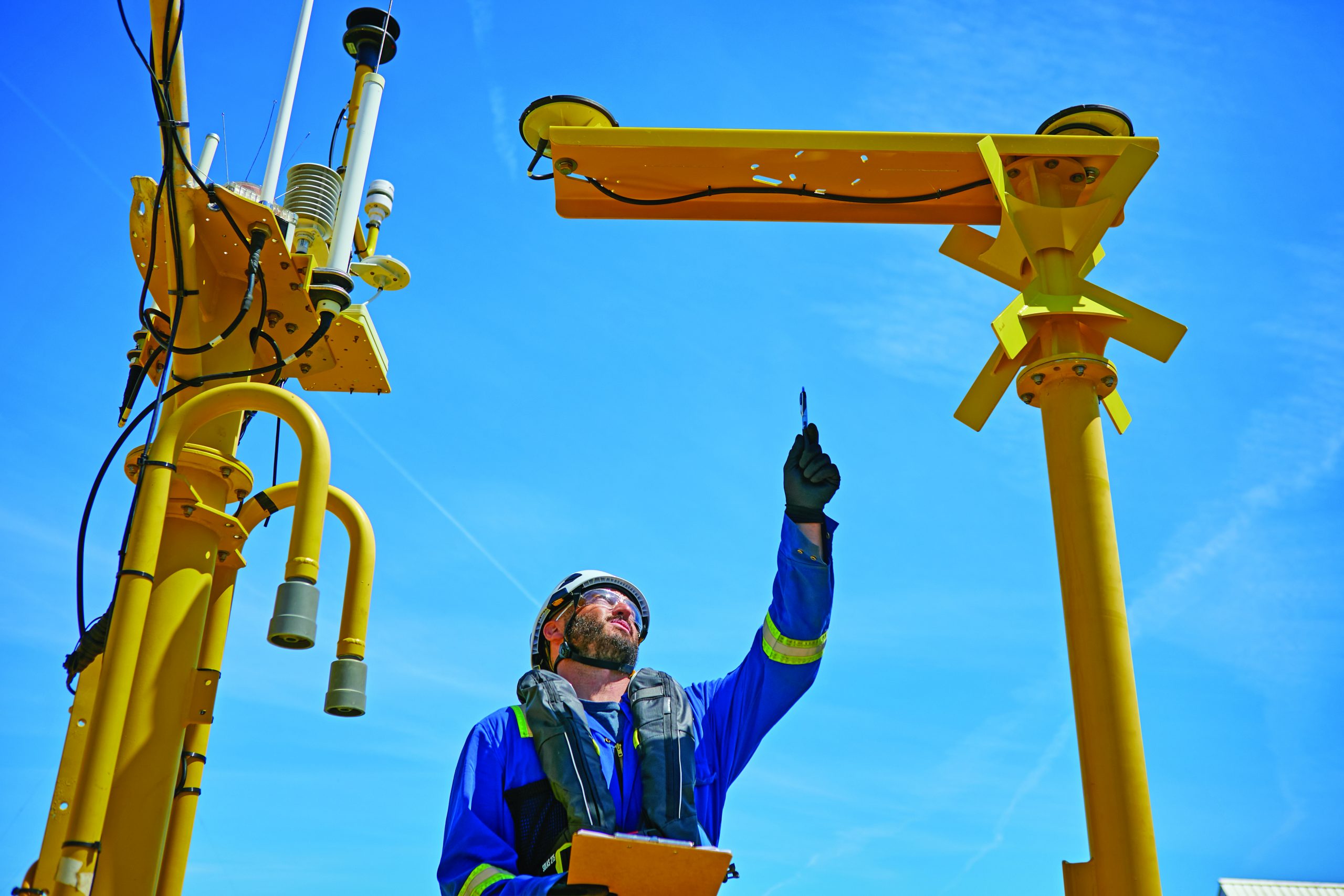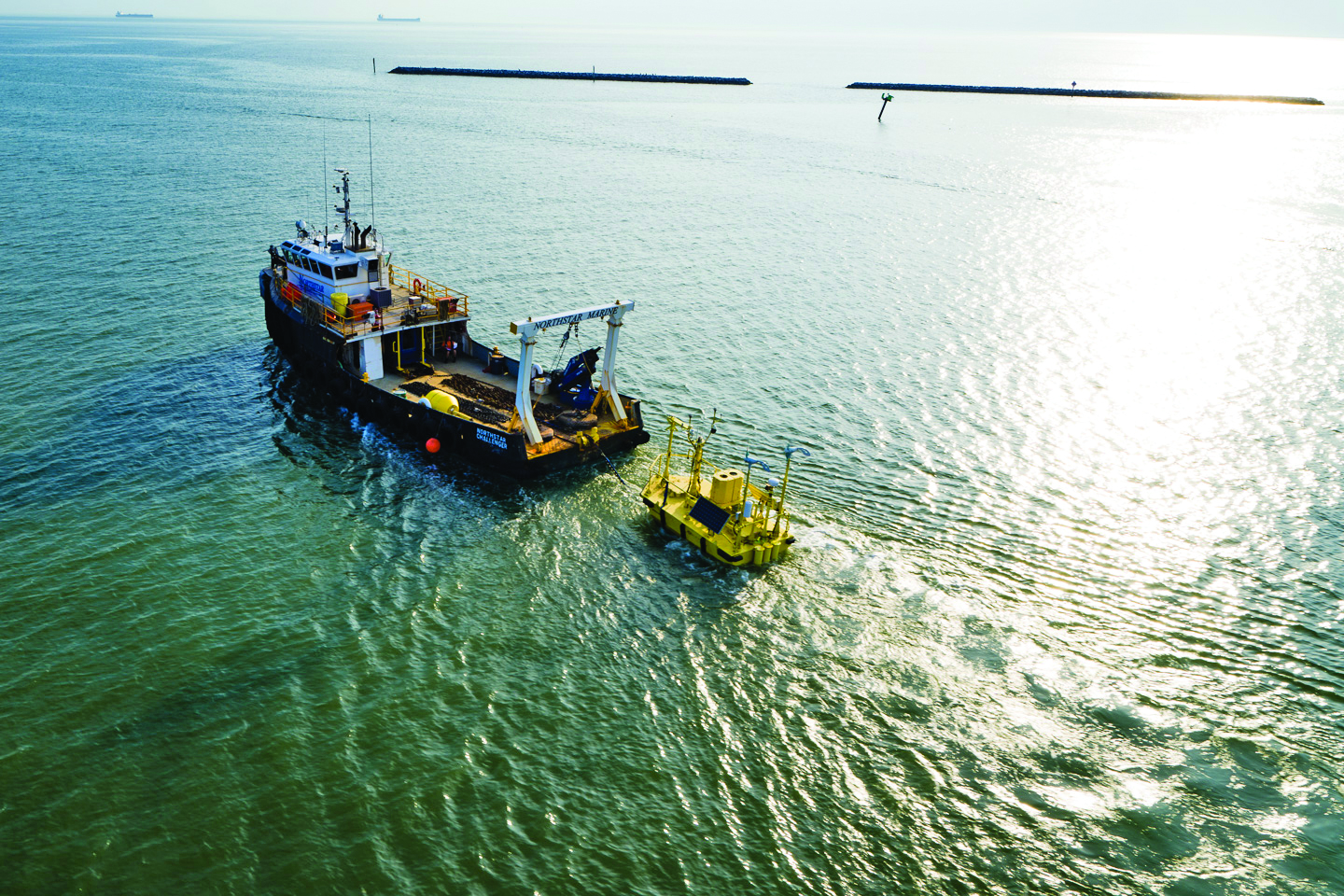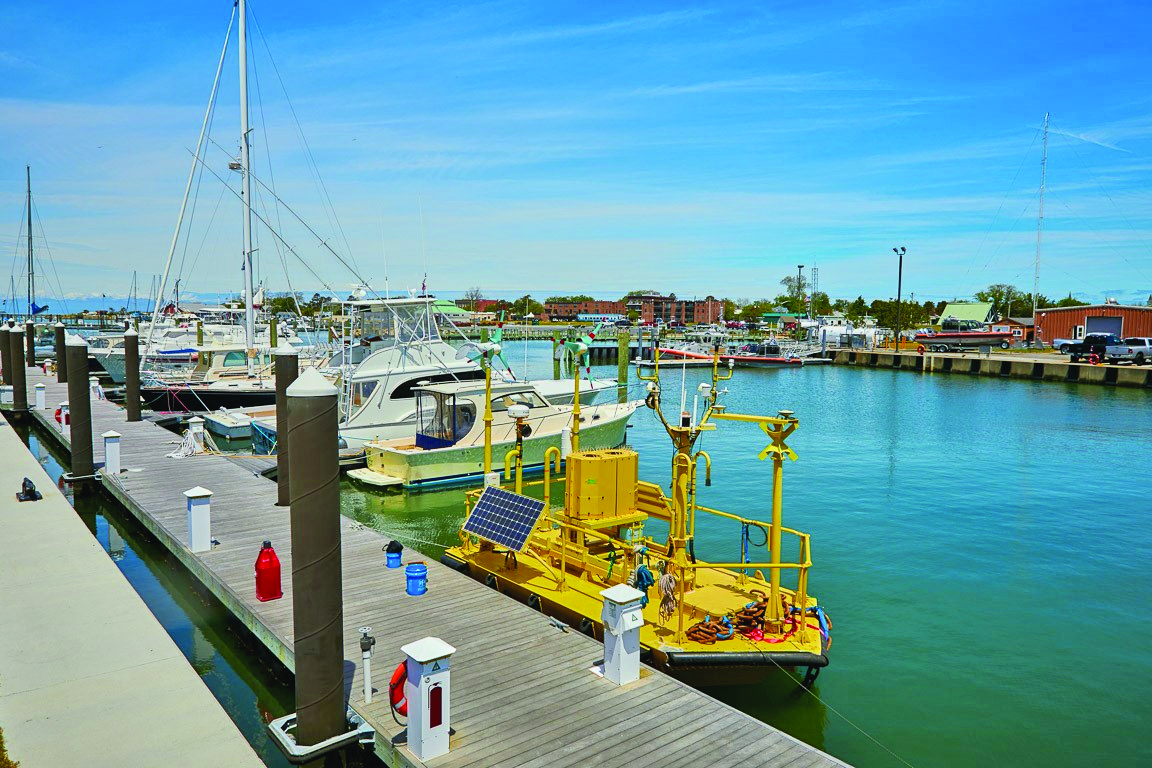Twenty-seven miles off the coast of the Outer Banks of North Carolina, cutting edge research is under way. Kitty Hawk Offshore Wind, a project of Avangrid Renewables, is making substantial progress on the evaluation of the Wind Energy Area (WEA) that the Bureau of Ocean Energy Management competitively awarded to the company in 2017. The WEA is 122,405 acres on the Outer Continental Shelf (OCS). It is estimated that, when fully developed, the Kitty Hawk WEA could yield as much as 2,500 MW of clean, low-carbon energy — enough to power approximately 700,000 homes.
Avangrid Renewables is engaging in a rigorous, data-driven approach to develop the Kitty Hawk Offshore Wind project. In June, the company launched a meteorological buoy with cutting-edge offshore wind assessment technology. The Floating Light Detection and Ranging (FLiDAR) instrumentation buoy collects real-time meteorological and ocean data to inform the development of the Kitty Hawk Offshore Wind project compatibly with the ocean environment.
The FLiDAR WindSentinel™ is an industry-proven technology developed by AXYS Technologies, Inc. that integrates a Light Detection and Ranging (LiDAR) on a moored buoy to provide data on wind speed, wind direction, and turbulence at the turbine hub-height and across the blade span. This buoy is also equipped with a range of other sensors to measure surface wind speed and direction, relative humidity, directional waves, ocean currents, tide, salinity, water temperature, atmospheric pressure, and air temperature.
These measures provide a comprehensive data set of environmental conditions useful for wind resource assessment and wind potential monitoring over time.

Safeguarding Wildlife
The buoy minimizes potential impacts to offshore birds and marine mammals by curtailing landing areas for birds, preventing seals from hauling out on the buoy, and avoiding entanglements of marine mammals with the buoy anchor chains.
Avangrid Renewables is committed to a comprehensive, data-informed approach to harnessing an abundant, carbon-free domestic energy resource in a way that is compatible with the ocean environment. LiDAR technology has advanced the wind industry globally by informing turbine location based on considerations for the unique environmental needs of each site to make projects more efficient. Deployment of this technology to the Wind Energy Area is an exciting milestone for a project that will help ignite the nascent offshore wind industry off the coasts of North Carolina and Virginia.
The buoy will be installed for one year with the possibility of an extended time in a second location within the WEA. The data collected by the buoy will facilitate the design and development of the Kitty Hawk Offshore Wind project. As a part of the company’s commitment to openness and transparency with project stakeholders, data from the buoy is available to the public at www.kittyhawkoffshore.com/fishing.
Ocean Floor Data
In addition to the meteorological data from the buoy, evaluating the ocean floor is critical to inform turbine foundation design. To gather subsea data on the geological conditions of the WEA, survey vessels are conducting geotechnical analyses. The Kommander Susan, owned by Horizon Geosciences, began work in the area on August 6, 2020.

The geotechnical campaign is conducting borehole drilling and sampling to provide further information on the ground conditions and physical constraints across the site and to support the detailed survey planning and site characterization activities to be conducted in 2021. Laboratory tests of the collected samples will determine the nature and composition of the terrain.
The meteorological and geotechnical survey work underway is critical to the successful development and operation of the project, an outcome that will deliver substantial benefits to a wide array of stakeholders throughout the region for decades to come.
Meeting Carbon-Reduction Goals
Once complete, Kitty Hawk Offshore Wind will deliver a cost-effective, carbon-free source of energy to major coastal population centers, helping states meet their ambitious carbon reduction goals.
Additionally, the project represents a substantial investment in the economies of Virginia and North Carolina. The project is expected to drive almost $2 billion in economic activity in the region, including projected construction investment, increases in household incomes, and additional tax revenue at both the state and local levels.

This substantial investment will spur considerable employment: Kitty Hawk Offshore Wind-related construction activities are expected to employ more than 700 people during the construction phase and create or support nearly 1,000 jobs throughout the region once fully operational.
In addition, as Kitty Hawk Offshore Wind and other offshore wind projects are developed, the East Coast will attract companies in the offshore wind supply chain, creating further opportunities for employment and innovation in the mid-Atlantic region.
The future is bright for the offshore wind industry and for the Kitty Hawk Offshore Wind project. The geotechnical surveys occurring now are laying the groundwork for a project that will deliver clean energy and economic growth.
The first phase of Kitty Hawk Offshore Wind could come online as soon as 2026 with a full buildout of the Kitty Hawk WEA — estimated at 2,500 MW — complete by 2030. Once online, the clean energy generated by Kitty Hawk Offshore Wind will provide clean, affordable energy for decades to come.
























